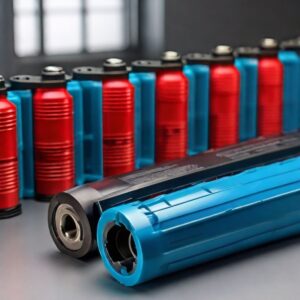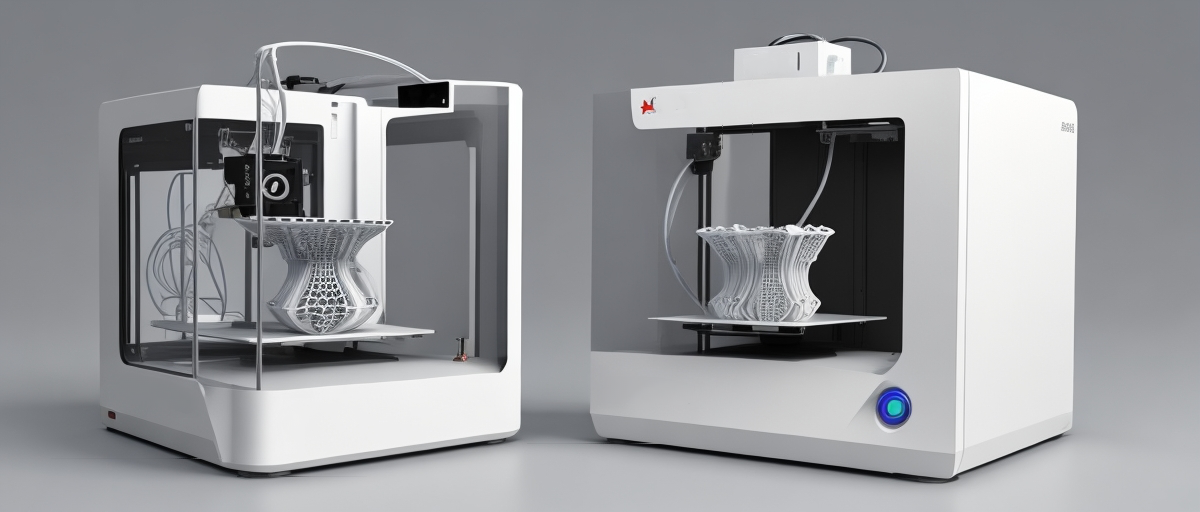 The adoption of 3D printing technologies holds the potential to revolutionize the way batteries are designed and manufactured. This innovative technique can be used to print complex electrode geometries and develop unique lattice structures within the battery cell, thereby improving the surface area and pathways for electron and ion movement. Such enhancements can lead to more efficient charge and discharge cycles, ultimately improving the battery’s overall performance and energy density. The versatility of 3D printing allows for the customization of battery shapes and sizes to fit specific applications, something which can be both time-consuming and costly with traditional manufacturing processes.
The adoption of 3D printing technologies holds the potential to revolutionize the way batteries are designed and manufactured. This innovative technique can be used to print complex electrode geometries and develop unique lattice structures within the battery cell, thereby improving the surface area and pathways for electron and ion movement. Such enhancements can lead to more efficient charge and discharge cycles, ultimately improving the battery’s overall performance and energy density. The versatility of 3D printing allows for the customization of battery shapes and sizes to fit specific applications, something which can be both time-consuming and costly with traditional manufacturing processes.
By optimizing the microstructure of battery components through 3D printing, it’s possible to create batteries with improved thermal management characteristics and a lower risk of overheating. This can be particularly beneficial in electric vehicles and electronic devices where safety and reliability are essential. Additive manufacturing minimizes material waste as it uses only the necessary amount of material to create the part, in contrast with subtractive manufacturing which removes material from a larger block. This advantage makes 3D printing an eco-friendlier choice and may also reduce the cost of battery materials, which are often expensive and sometimes rare.
The experimental nature of 3D printing in battery production also opens up the field to rapid prototyping. Battery developers can swiftly design, print, and test new battery designs, accelerating the innovation cycle and arguably leading to faster advancements in battery technology. While there are challenges to overcome—such as ensuring structural integrity and scaling up the technology for mass production—the integration of 3D printing in battery manufacturing processes suggests a promising avenue for future energy storage solutions. As the technology matures and its applications are further explored, we might witness a new era of high-performance batteries that are engineered to meet the energy demands of tomorrow.
The Advantages of 3D Printed Batteries
The flexibility offered by 3D printing technology extends well beyond simple customization. Manufacturers can iterate through design variations swiftly to achieve optimal performance for bespoke applications, such as wearable technology, medical implants, or aerospace components. This design freedom enables the creation of batteries that conform precisely to the physical contours of the device they power, maximizing the available space and potentially extending device longevity. The layer-by-layer approach in 3D printing facilitates the construction of elaborate internal structures that can improve conductivity and enable more effective electron and ion flow, directly enhancing the battery’s power output and charge rate.
Another advantage of 3D printed batteries lies in their potential environmental impact. Traditional manufacturing methods for batteries often involve complex assembly processes, which may generate a notable amount of production waste and can be energy-intensive. Additive manufacturing tends to generate less waste, as material is deposited only where needed, and the energy consumed is often less than in conventional processes. reduction in waste and more efficient use of resources reflect a step towards more sustainable manufacturing methods, which is increasingly important as the global demand for batteries continues to grow.
In terms of research and development, the rapid prototyping capabilities of 3D printing allow researchers to test a variety of battery chemistries and configurations quickly. They can adjust a design and reprint it with ease until the optimal performance is achieved, thus significantly cutting down development costs and timelines. This can be particularly important in sectors that require high-performance, custom batteries, such as electric vehicles and renewable energy storage. The agility in research made possible by 3D printing ensures that innovative battery technologies can be developed and refined at an unprecedented pace, keeping up with the growing energy requirements of modern industry and consumer electronics.
Batteries can also become more reliable and safe. With better control over the manufacturing process, it is possible to create batteries with more uniform structures, reducing the risk of defects that could lead to malfunctions or safety issues like short circuits or thermal runaway. As the technology progresses, we can anticipate that 3D printed batteries will become more customizable and efficient and play a key role in advancing the sustainability and safety of energy storage systems around the world.
Applications in Renewable Energy Storage
The impact of 3D printing becomes even more pronounced in the context of renewable energy. Energy storage systems, such as those required for solar and wind power, can greatly benefit from batteries that are lightweight, have high energy density, and can be created in shapes that optimize space. 3D printed batteries can be fabricated to match the specific needs of renewable energy installations, enabling better integration and helping to solve the intermittency problem that these energy sources face.
The Role of 3D Printing in Scalability and Sustainability
The scalability of 3D printing technologies has the potential to transform the battery manufacturing landscape in several ways. Unlike traditional manufacturing, which often requires large runs to justify the setup costs of molds and tooling, 3D printing excels in the production of small to medium batches, where personalization and precision are paramount. This makes it ideal for the manufacturing of specialized and high-value batteries that are needed in smaller quantities, such as for medical devices, prototypes in R&D, and custom electronics. The ability to produce these specialized batteries on an as-needed basis helps manage costs and enables manufacturers to respond quickly to specific market demands without overproduction, thus aligning production rates with actual consumption.
The digital nature of 3D printing’s design-to-production workflow means that scaling up can be a more streamlined process. As demand grows, manufacturing can be ramped up by simply running more 3D printers or distributing the production across different locations. This decentralization of production can reduce transportation distances and associated emissions, as batteries or their components could be manufactured closer to the point of use rather than at centralized factories.
On the sustainability front, 3D printing offers the potential to minimize wasted materials through additive processes that deposit materials only where they are needed. This represents a stark contrast to subtractive manufacturing techniques, which remove material from larger blocks and often result in significant waste. The precision of 3D printing allows for the efficient use of advanced, more sustainable materials, including biodegradable or recycled substances, which might otherwise be too costly or complex to shape with traditional methods.
The technology also facilitates experimentation with novel types of eco-friendly battery chemistries that are difficult to produce with conventional methods. For example, 3D printing can accommodate the production of solid-state batteries, which can potentially offer higher capacities and safer performance compared to traditional lithium-ion batteries, all while utilizing less toxic materials.

